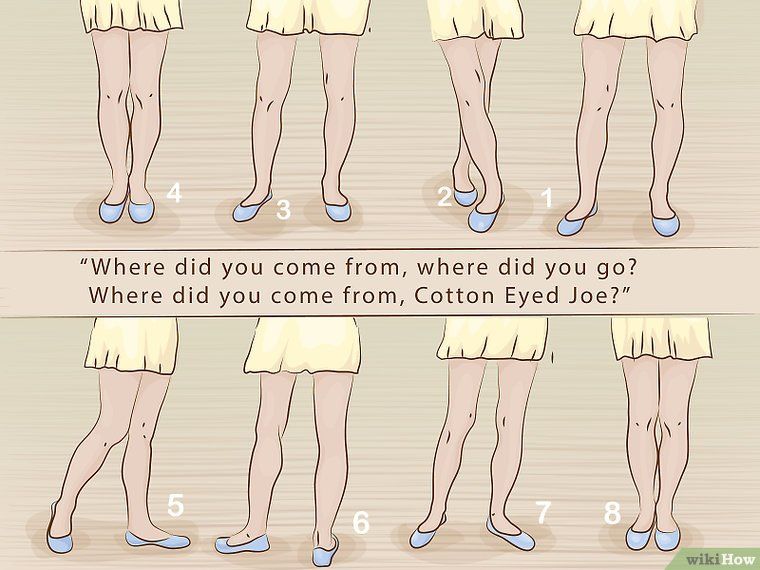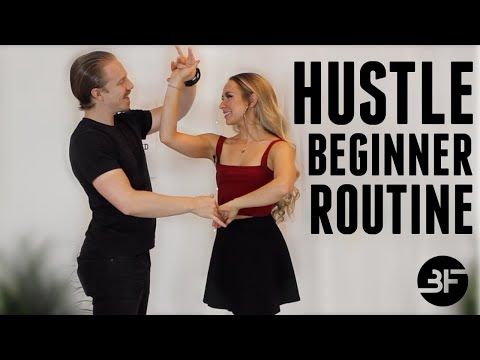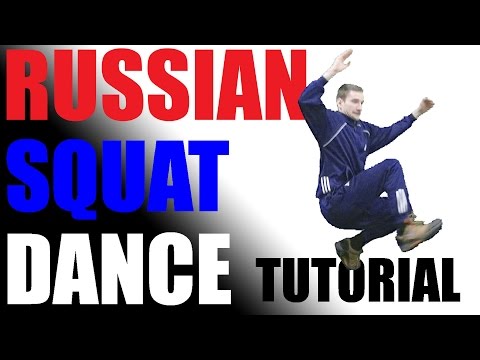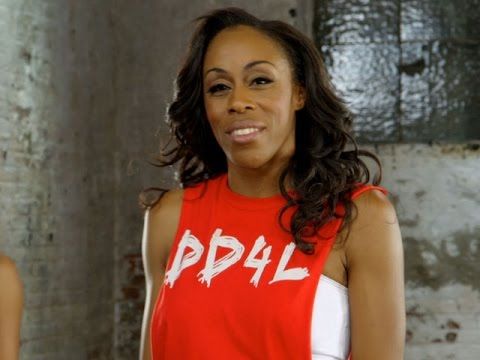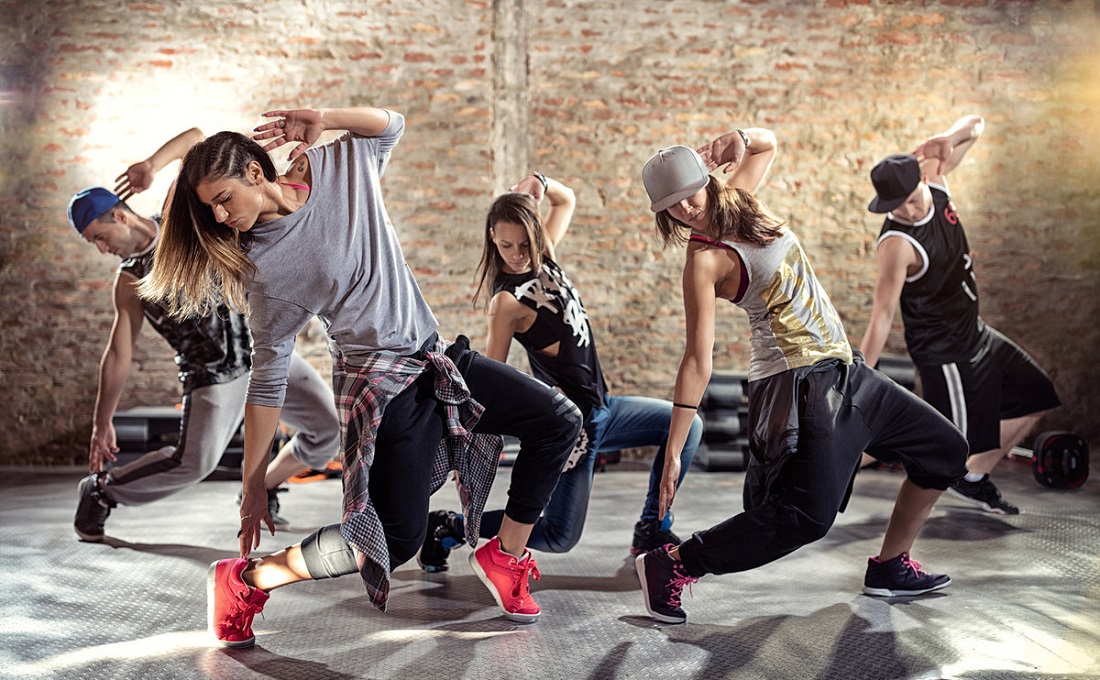How to improve dancing at home
5 Simple Daily Practices To Improve Your Dancing
Finding time to improve your dance skills can be really, really tough.
You may want to become a better dancer, but how can you fit 1-2 hours of dance class between work, school, a social life, and EVERYTHING else!?
Even if you can't make it to class, you can still improve your dance skills with a few simple, daily practices.
Just follow these tips to keep leveling up, every. Single. Day.
One of the best ways to start your day is with a morning stretch!
Stretching will help you improve your dancing by making you more flexible and increasing your range of motion.
It will also reduce the risk of injuries like pulled muscles.
Your routine doesn’t have to be long or intense – you just have to get your body moving.
Watch this video to learn how to (and how not to) stretch!
We also have a quick and easy stretching class you can take on STEEZY Studio!
"Muscle memory" is the ability to execute a movement without having to think about it.
You can practice muscle memory by doing doing the same technique, skill, or routine over and over again.
For example, if you want to practice certain things like isolation or hitting, take breaks during work or studying to do some drills.
Repetition will help your body remember moves and choreography, so that with enough practice, you will be able to do them automatically.
And on that note...
Have you ever watched someone do a routine they learned 5 years ago, and they do it flawlessly, like they just learned it yesterday?
It's because they didn't stop practicing when the class was over! Review pieces you’ve learned to keep them fresh in your mind.
This conditions your brain to consistently think about body placement.
Chances are, dance videos are probably what got you into the dance in the first place.
Watching is not the same as doing, but it can be just as valuable as practice.
If you watch a video with the intent to learn from it, you'll still grow as a dancer.
As you watch, think about the connections between the movements, how the choreographer interpreted certain sounds, their performance, the execution, etc.
Not sure where to start? You can always check out STEEZY's channel for the newest videos by top choreographers!
This one’s hard – I mean, who wants to give up hot cheetos and peach rings?
But poor eating habits can be detrimental when you really want to improve your dancing.
Plan your day ahead and pack some fruits or veggies. Or throw a granola bar in your bag if you’re on the go.
Junk food can give you quick bursts of energy, but will ultimately make you feel weighed down.
Healthier foods energize you more sustainably, and good eating habits will lead to better health in the long run.
That means, your body will be able to dance longer, stronger, and better!
If you can’t set aside time for a traditional class, try taking a class online with STEEZY Studio!
Each class is broken into bite-sized sections that you can take anytime, anywhere, at your own pace.
You can improve your dance skills by taking shorter classes that focus on fundamentals, or learn a whole piece by working on it, little by little, every day.
Want to see how it works? This explains it all:
5 Ways to Improve Your Dance Technique this Year
1 March3018August 14, 2022
5 Ways to Improve Your Dance Technique this Year
How to Improve Your Dance Technique
If you’re looking to improve your dance technique in 2018, there are several factors to explore. First, congratulations on taking the first step! Often times the hardest part of setting a new goal is getting started. You’re off to a great start by doing your research. Next, it’s important to remember that significant progress takes time and won’t happen overnight. Improvement takes daily, or at minimum, weekly practice. Consistency is key! Whether you’re a beginner dancer or you’ve been dancing for several years, consider the following tips to improve your dance technique this year.
First, congratulations on taking the first step! Often times the hardest part of setting a new goal is getting started. You’re off to a great start by doing your research. Next, it’s important to remember that significant progress takes time and won’t happen overnight. Improvement takes daily, or at minimum, weekly practice. Consistency is key! Whether you’re a beginner dancer or you’ve been dancing for several years, consider the following tips to improve your dance technique this year.
1. Stretch daily
Although it may seem elementary, it’s important to remember to stretch every day to improve your dance technique. Your stretching routine doesn’t need to be long or overly complicated, however “the simple act of getting up and getting your body moving is a great way to jump start the day. Stretching will help you improve your dancing by making you more flexible and increasing your range of motion. It will also reduce the risk of injuries like pulled muscles (Steezy, 2017).
Here are a few things to avoid when stretching, via DanceTeacher:
- Avoid trying to progress too quickly in your stretching, which can strain or sprain ligaments, tendons or muscles. Dancers need to gradually increase stress on muscles so they have time to adapt.
- Warming up properly before stretching is essential. If you’re stretching a cold muscle, or stretching for so long that muscles get cold, you actually end up stretching the joint instead.
- Perhaps most importantly, strength building should go hand in hand with stretching. Focusing on strength can benefit your functional flexibility more than anything else.
Explore “Stretching For Dancers” below for some worth-while tips:
2. Don’t be afraid to challenge yourself!
Improving your dance technique can include exploring new types of dance, trying different routines and pushing yourself outside of your comfort zone (safely, of course). Ask your dance instructor about other types of dance offered at your studio, that you haven’t tried before. Then, make a point to sit in on a class and observe.
Ask your dance instructor about other types of dance offered at your studio, that you haven’t tried before. Then, make a point to sit in on a class and observe.
If you’re not interested in exploring new types of dance, then review pieces you’ve learned before and make a point to re-master them. “Do you ever play a set from 5 years ago during practice, and watch someone do it flawlessly, like they just learned it yesterday?… (That can be you) if you just practice!” (Steezy, 2017). Condition yourself not to stop practicing or learning, long after a performance or routine is through.
3. Tell yourself you can do it
Never discount the power of positive thinking! “Negative thoughts are only going to bring you down, literally” (rockettes, 2018). Learning new techniques, a different style of dance, or even committing to perfect your stretching can all seem super intimidating. Remember to give yourself credit for wanting to improve- starting is always the hardest part when trying to achieve a new goal! Try telling yourself “I can do this,” out loud, before trying your new activity.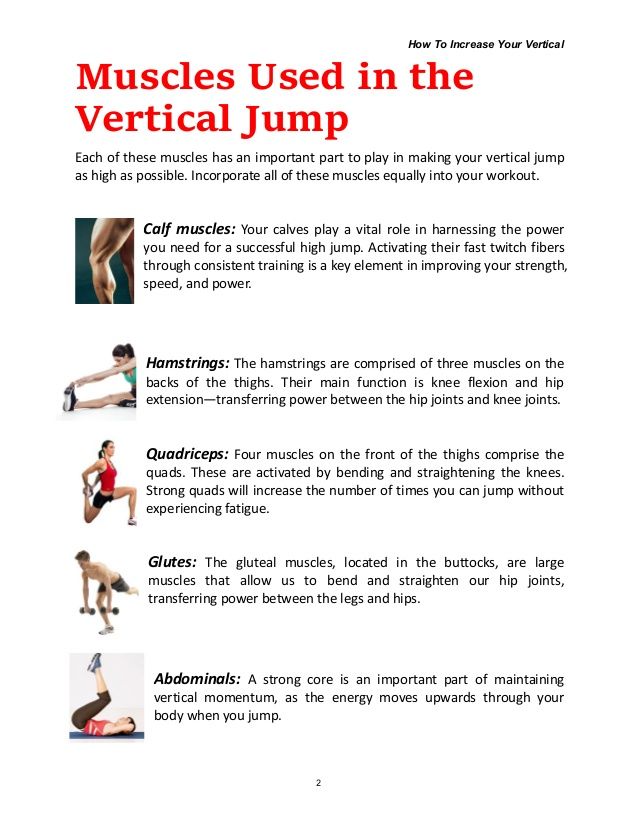 Over time, the simple act of declaring confidence in yourself will begin to convince your inner critic. You’ve got this!
Over time, the simple act of declaring confidence in yourself will begin to convince your inner critic. You’ve got this!
4. Videotape yourself dancing
Are you super clear on specific elements of your dance technique that you want to improve? If not, videotaping yourself dancing is a great way to start. Ask your dance instructor, a friend or a family member to capture you practicing a particular routine so you’re able to review your performance. By watching yourself dance, it will become much clearer which areas need improvement. Don’t be afraid to ask your dance instructor to watch the video with you as well. It may be helpful to hear their expert opinion on the areas you should focus on to improve.
5. Ask Your Teacher for Help
Your dance instructor is invested in your success as a dancer. They’re committed to helping you achieve whatever your specific dance goals may be, from improved flexibility to learning a new, rigorous routine. Don’t hesitate to ask them for help when it comes to going after a new goal.
Don’t hesitate to ask them for help when it comes to going after a new goal.
“Instead of just going to class, dancing and going home, get help from others to improve your dance technique… Ask an instructor to give you all the corrections possible and learn from your mistakes. You will always be improving your dance technique so why not use all of the sources possible to do so? It doesn’t cost anything to watch and get help from others. But by taking the time to do so, you can see significant improvements in your dancing fast!” (Dance Full Out, 2012).
Share this post?
90,000 12 life hacks, to quickly learn how to dance from Mamita DanceDances
Author: Pavel Gather
Psychologist, Lecturer Salsa and Tango
Dances
Author: Pavel Pavel
Psychologist, Lecturer Salsa
on At the start, you always want to get a quick result. When it doesn't happen, the hypothesis arises that everything takes time.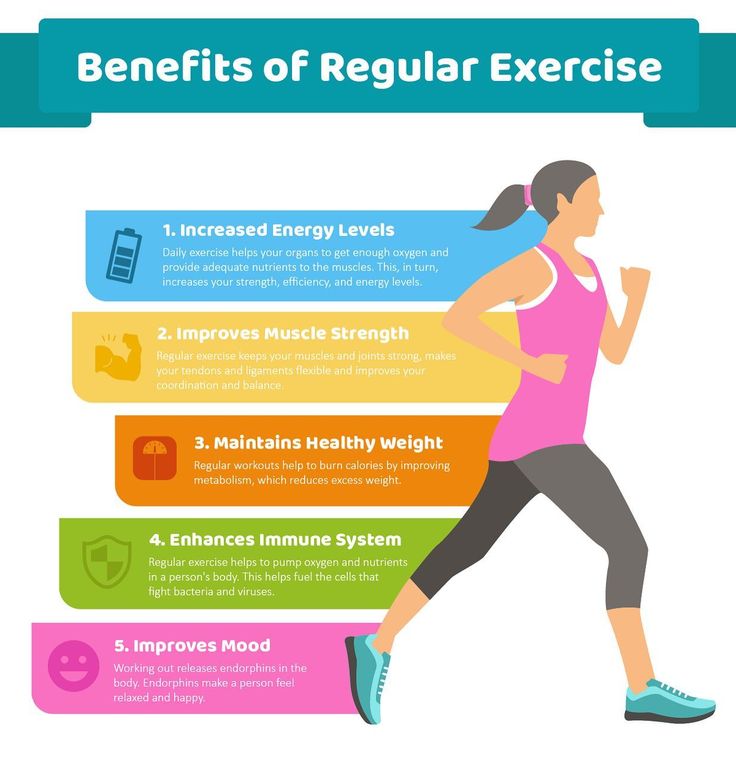 After a conditionally acceptable time, humility comes to mastering pair dances, which, perhaps, is not given, and I will just do what I learned at least somehow. nine0003
After a conditionally acceptable time, humility comes to mastering pair dances, which, perhaps, is not given, and I will just do what I learned at least somehow. nine0003
This is the most common story of those who believe that the mere act of attending a pair dance class is enough to learn how to dance.
Absolutely not. If you want to really dance well, you have to make an effort outside of the dance class. A good teacher will definitely be needed, but the initiative should be on your side.
1. Listen to music
The most common and accessible advice that is given already in the first lessons. And it definitely works. Music creates a certain atmosphere of the dance and intuitively you want to move to it. It doesn't matter where you listen to music - in the car, on headphones while walking or doing household chores. nine0003
An addition that will help you dance better is your active participation in the music. Sing along, dance or simply beat musical accents with any free parts of the body. In the subway, for example, it is enough to tap out bright moments with your fingers, in the car to sing along with sounds, and at home you can jump for pleasure.
In the subway, for example, it is enough to tap out bright moments with your fingers, in the car to sing along with sounds, and at home you can jump for pleasure.
2. Watch videos of good dancers
It's complicated, but also obvious. It’s more difficult, because without recommendations from more experienced dancers, unfortunately, it’s not so easy to find a good quality video on the net (I mean not the resolution quality, but the content itself). nine0003
Meaningful viewing of the video is to form an understanding of HOW the dancers make this or that impression on the partner or the viewer. Technology is at the heart of everything. Understanding how the pros do it is a big step forward.
It is important to distinguish between a show and a disco dance, a choreographed performance from an improvisation, a stylized dance from an authentic one, etc. Ask for recommendations and dance instructors will always upload a couple of videos of worthy landmarks. nine0007
nine0007
Tango Z. Showreel.
Online modern tango courses
Tango nuevo is the most advanced version of tango. We can quickly learn to dance from zero to a steep level.
| View details |
3. Dance in salsatecas/milongas/discotheques
A very delicate moment when it is worth coming to the first party. From a technical point of view, most students in 1-3 months have a sufficient set of figures and techniques to come and dance calmly. Psychologically, the same moment can be stretched out for an indefinite time. After all, it is imperative to “not lose face”, “learn more figures” and be sure what to do in case “there is an unfamiliar movement”. nine0003
In fact, the partygoers don't really care (except for a small layer of non-professional teachers who want to help inexperienced dancers by treating them as customers in the future). It is important to come and try dancing after a month of classes. You can only with friends or guys from your group. This will be enough to feel the adrenaline and inspiration from the dance.
You can only with friends or guys from your group. This will be enough to feel the adrenaline and inspiration from the dance.
4. Dance with partners or partners not of your level
The conventional wisdom that you need to practice in groups of your level does not withstand the test of experience. Perhaps now your eyes widened in surprise, and you want to meaningfully read the phrase again. Yes, you saw everything correctly: when you dance with a partner of your level, you don’t grow anywhere. nine0003
It's important to understand that not only does it work one way and you have to dance with cooler dancers, but it works even more effectively the other way. It is no coincidence that teaching pair dances dramatically raises the level of the teacher himself. You have an endless stream of very beginner dancers.
How it works. A more experienced partner needs to be "stretched". It's easy and obvious. With beginners, you need to take more initiative on yourself, see the general pattern of the dance more widely, turn on and insure more, try to be an example and be more careful.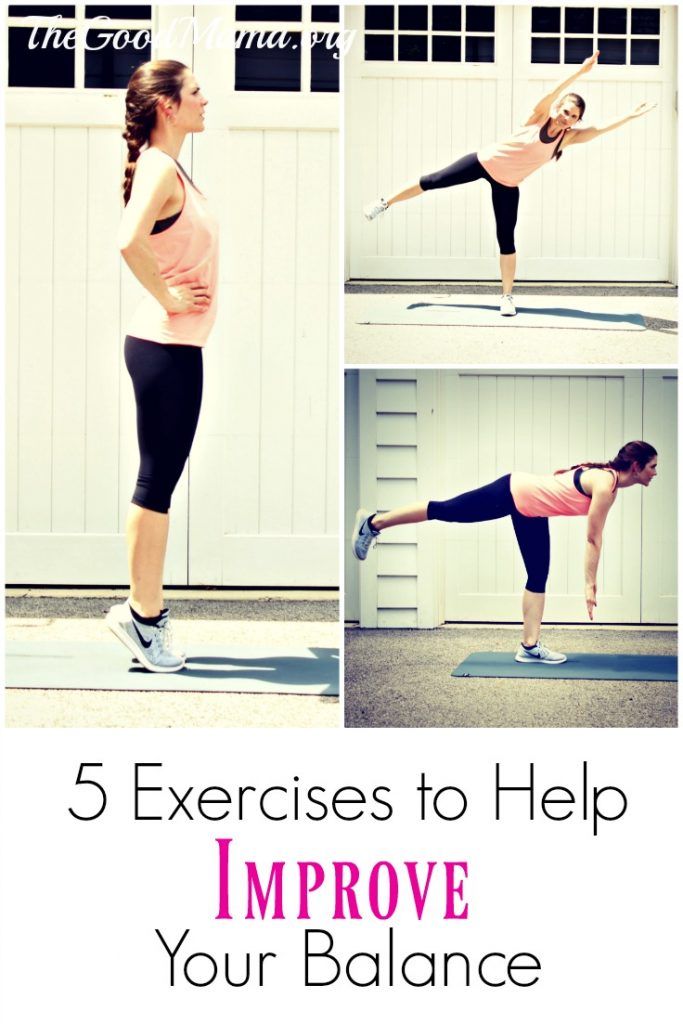 The quality of interaction begins to grow significantly. And wonderful partners too. nine0003
The quality of interaction begins to grow significantly. And wonderful partners too. nine0003
Dancing with partners of your level doesn't make you grow. Dance with both beginners and more advanced dancers
Dominican Bachata Women's Style Online Course
Want to learn how to hypnotize those around you with the most appetizing part of your body? On the course we will tell all the secrets.
| Interesting |
5. Learn to dance for a partner and for a partner
Turks and Argentines are one of the best partners in the world. In Russia, partners are highly valued. Why? The answer is simple. In Argentina and Turkey, it is not questionable for men to ask another man to lead in one piece or another and give feedback on the quality of the lead. For them, it will be a great shame to hear moralizing from a partner, or even more so to be known in the community as an insecure partner. nine0003
nine0003
In Russia, due to the constant, often far-fetched, opinion that there are more women in pair dances, partners calmly get up and study their partner's part. Such partners then grow into very cool dancers and teachers. In no case do this at parties, only in class. Here we are talking only about the learning strategy. At parties, be yourself.
6. Do not memorize the links
Always try to look deeper and understand the through principle and idea of movement. Understanding what and how is done will make it possible to independently generate any sequences and chips. nine0003
Human memory is limited and there will always be a moment when something will escape and your repertoire will be limited by the size of RAM.
In Argentine tango, for example, there are seven levels of movement construction that, when mastered, will allow you to make millions of combinations. And how many dance sequences can you really remember? In rueda, more than 150 figures dance in a rare circle. It's hard to keep more in mind.
It's hard to keep more in mind.
7. Develop your body
Many years of experience in teaching couple dance shows that as soon as everyone pairs up in a class, any progress in individual style ends. But it is the individual style that distinguishes everyone at the disco: partners change, and style is always with you. nine0003
The body as the main instrument of dance must be very plastic, responsive and emotional. Surprisingly, not all pair dance schools have a general physical warm-up. It is vital to tune the body and understand how it works.
You can always train extra and concentrate more on the basic steps, as their true value is as body work. The sequence of steps is, in fact, the simplest thing that can be in pair dancing. The quality of individual performance determines the craftsmanship. nine0003
8. Try on the images of inspiring dancers
A psychological life hack for those who have already mastered the steps, but still feel that there is not enough brightness and drive.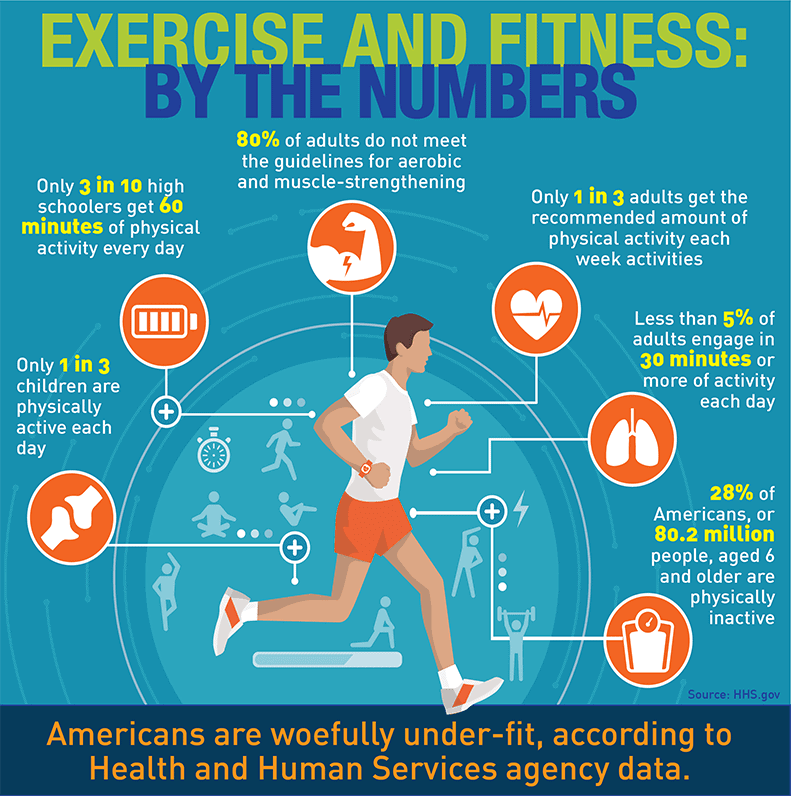 Most are terribly afraid of being someone else's "clone". Here the action is the same as under the influence of hypnosis - the more you resist, the more you plunge into an altered state of consciousness.
Most are terribly afraid of being someone else's "clone". Here the action is the same as under the influence of hypnosis - the more you resist, the more you plunge into an altered state of consciousness.
With a high degree of probability, you are already dancing like someone else's "clone". A meaningful fitting of someone else's image is that you mentally take the image of the one who inspires you (inspiration is critical in this case) and "put on" yourself. Then you start dancing and trying to feel in general how it is to be able, for example, to be the best partner or the sexiest partner in a disco. This is much more difficult than it seems. But it works extremely efficiently. nine0003
9. Dance to offbeat music
Habitual rhythms keep you tight. Tango salon or speedy timba leaves little room for experimentation and fantasy. Pattern dancing is always noticeable and is reserved for beginners.
The truly new is born outside of the usual. Look for places to experiment. If there is no place, organize self-training. The main thing is not to get carried away, because music determines the style. We bring something new to pair dances, rather than trying to change them. nine0007
Look for places to experiment. If there is no place, organize self-training. The main thing is not to get carried away, because music determines the style. We bring something new to pair dances, rather than trying to change them. nine0007
Search, improvise, don’t be afraid to go beyond, develop in different directions, be inspired by music atypical for the style
10. Try your hand at basic dance directions
dances exist according to their own non-choreographic laws.
This is the deepest delusion, which has turned into a ceiling for the qualitative development of partner dances. After all, all professional dancers, for example, in salsa or bachata, build their ideas on the basic choreographic principles. nine0003
Do not think that choreography is only applicable on stage. Any meaningful movement of the body can be choreographic. In general, try classical or modern choreography. Basically, hip-hop can work too.
11. Look for battle sensations
Pair dances return us to an active position of manifestation of our body. As in the days of our ancient ancestors, we impress the members of the opposite sex by how dexterous, hardy, sexy, etc. we are. Modern laws of the jungle in the entourage of large cities. nine0003
If you look around the dance floor, it becomes clear that the majority are clearly herbivores (not in the sense of vegetarians, but in relation to those around them). I am sure that predators are always more interesting in terms of the attractiveness of the image - try to find a counterbalance among herbivores, for example, a cat woman or a lion man.
The conversation is about an internal position, not about aggressiveness. Lability and lack of control are inherent in adolescents, and not in adult self-sufficient people.
Accordingly, even a training or friendly battle gives, on the one hand, practical skills - to make a bright sequence of movements, bring an idea to a climax, show a spectacular feature, on the other hand, develops the psychological basis of the dance - self-confidence, resistance to extraneous attention, self-control and self-control in complex elements.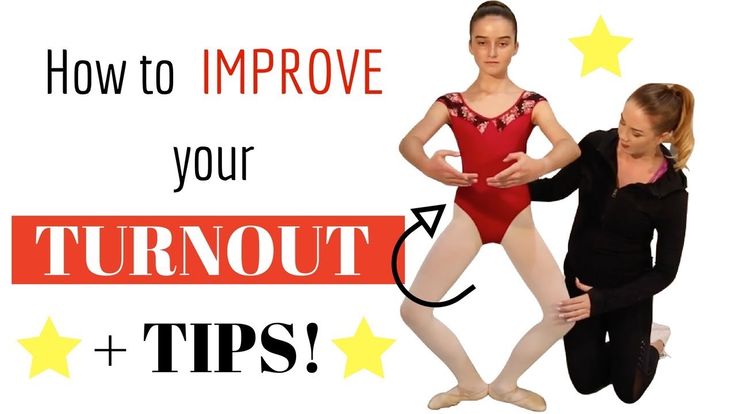 nine0007
nine0007
12. Communicate with professionals
The environment shapes the internal position. Basically, real passionaries of the dance community are ready to openly talk, discuss and support the development of dance in every possible way. Universal principles and the ideas they articulate have a much longer and more practical perspective than meets the eye.
Accept that, for example, behind the words "listen to your partner" is not only a beautiful metaphor, but also a practical skill to literally listen to your partner. At the same time, always treat every thought, even the most respected teacher, as a private opinion. nine0003
Your skill will lie in finding the scope of the idea even in conflicting opinions. Most often, the contradiction is speculative and the truth lies in the angle of perception or situationality.
Your dancing growth will stop sooner or later. This can happen at the level of three basic steps or years of experience in teaching and show performances. Regardless of your level, the suggested 12 life hacks can get you off the ground and greatly accelerate your dance growth. There is no way here without your motivation and activity. Take your dance development into your own hands. nineOl000 Dangerous sexuality
Regardless of your level, the suggested 12 life hacks can get you off the ground and greatly accelerate your dance growth. There is no way here without your motivation and activity. Take your dance development into your own hands. nineOl000 Dangerous sexuality
Salsa: destroyers of stereotypes
Couple dancing as a source of strength.
Self-destruction of the couple dance community
The Salsa series as a mirror of the community
Mamita Fridays: salsa, bachata
Destroying the myths about leading pair dances
Does dancing make us better?
The seven deadly sins of teachers
Why we will never dance bachata like the Dominicans
Why tango?
Dispute over musicality
Selection of dances according to alcohol preferences
Where to find inspiration for dancing? nine0003
Terrible tango nuevo
Distribution of roles in a salsa party
Argentinean tango through the eyes of a salsa dancer
Is there a predisposition to dancing?
Which is more effective: individual or group lessons?
Sexual connotations in partner dancing
7 tips for those who want to learn how to dance
September 9, 2020 Reno5 A life
Dancing is a great way to make friends with your body and gain self-confidence.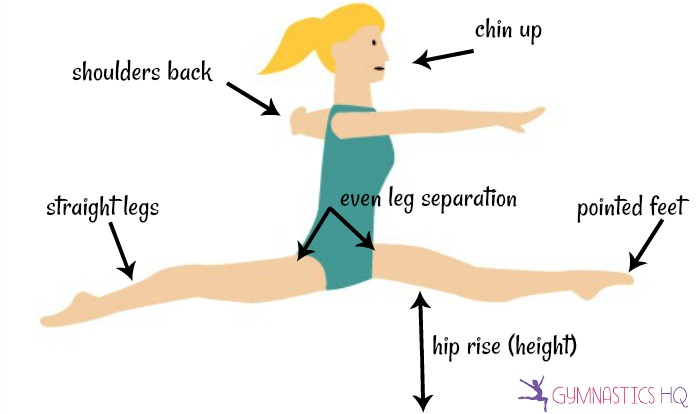 And yes, they can be mastered at any age. nine0003
And yes, they can be mastered at any age. nine0003
1. Choose your style
The idea here is the same as for sports: if you secretly hate yoga or iron exercises, you are unlikely to go to workouts week after week. To achieve noticeable progress in dancing, a beginner will have to practice a lot and regularly, so it’s better not to torture yourself and choose a direction that really ignites.
You can focus on the music that you like - you need to catch the drive from movements to it. It is music that forms the style of dance and its energy, so decide what is closer to you: for example, funk lovers should try popping or locking, folk fans may like Irish dancing, and if you respect jazz, swing and everything like that, take a closer look at lindy hop. nine0003
Another criterion is the nature of the movements. Some are closer to dynamic, as in hip-hop, others are smooth and sensual - for this in tango. There are also health restrictions to consider. So, twerk is not suitable if there are problems with the lumbar spine, with sore knees it is better not to get involved in shuffle, and it will be difficult for an aged person to master house.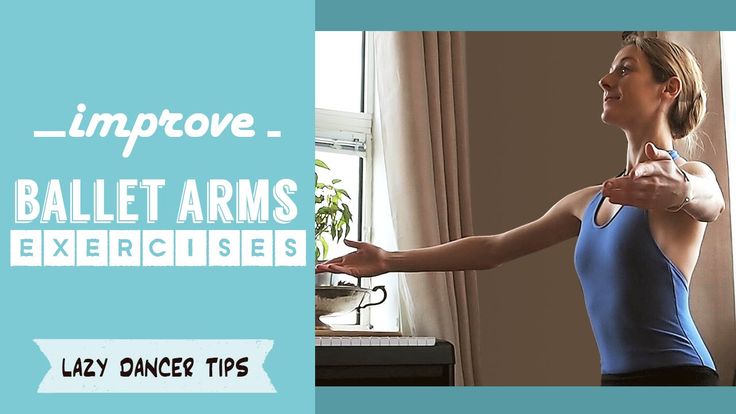
2. Set a goal
Photo: Iakov Filimonov / ShutterstockYou can start dancing at any age, but it's important to keep in mind why you started it in the first place. It is perhaps too bold to expect that in half a year of classes it will be possible to reach the level of international dance championships from scratch. But if you want to try dancing in order to develop plasticity and learn to feel the body better, great, go ahead. nine0003
Don't expect to get it right the first time. When you learn from scratch, difficulties are absolutely normal, the main thing is not to score in classes. Over time, both the correct posture and a beautiful gait will be developed, and as a bonus you will also get self-confidence - with freedom of movement, freedom from complexes will come.
3. Don't give up on sports
Some dances in themselves make for a good workout. A vigorous shuffle will replace cardio, and a break can give a load to almost all muscle groups. And yet, without preparation, it will not be easy.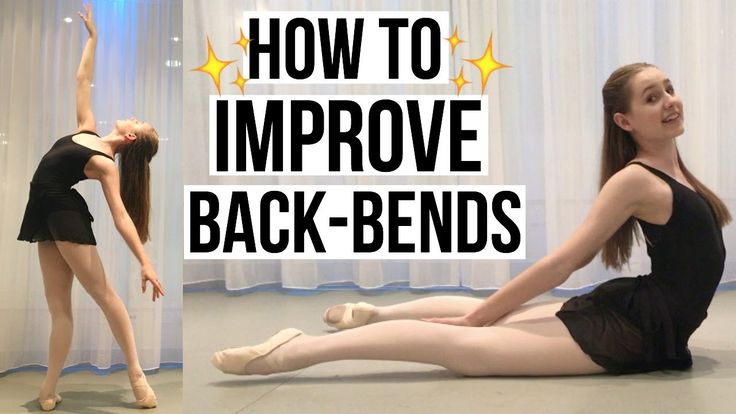 A more or less good stretch is needed in any type of dance, and, for example, strong arms and strong abdominal and back muscles are also useful for pole dancing. You can combine dancing with strength exercises, but you need to give the body time to recover and not plan classes in a row, but allocate at least a day of rest between them. nine0003
A more or less good stretch is needed in any type of dance, and, for example, strong arms and strong abdominal and back muscles are also useful for pole dancing. You can combine dancing with strength exercises, but you need to give the body time to recover and not plan classes in a row, but allocate at least a day of rest between them. nine0003
And don't forget to warm up before dancing. So that the training does not end with an injury, the muscles and joints need to be prepared for the load. You can allocate 10–15 minutes for a warm-up, it should include simple articular gymnastics (at least elementary rotational movements of the shoulders and knees), tilts and dynamic stretching.
4. Take some lessons from a trainer
Especially if you have never danced before. Those with experience can learn new styles at home with video tutorials, but that's because they already know how to control their bodies. Beginners are unlikely to succeed, but disappointment in themselves and demotivation are guaranteed - if you can’t repeat elementary movements, then there’s no point in doing it. nine0003
nine0003
Nothing really strange here. Without preparation, it is difficult to just take it and start moving freely. At least the basic elements are better to master under the guidance of a pro, and when you feel that you are coping, supplement these lessons with home workouts.
5. Learn something new in every class
When you repeat the same set of exercises and movements over and over again, classes turn into a good way to pass your free time, only you can forget about progress. Acquaintance with new elements is the same mandatory part of any workout as a warm-up. It doesn't matter if you work with a mentor or on your own. nine0003
Do not immediately try to copy cool dancers. First, study the basic movements, then try to combine them into bundles until you hone them to automatism, and then experiment and improvise, creating something new based on familiar elements.
6. Record yourself on video
You don't need to record the whole workout from the warm-up on, it's enough to record only those moments with which you have problems.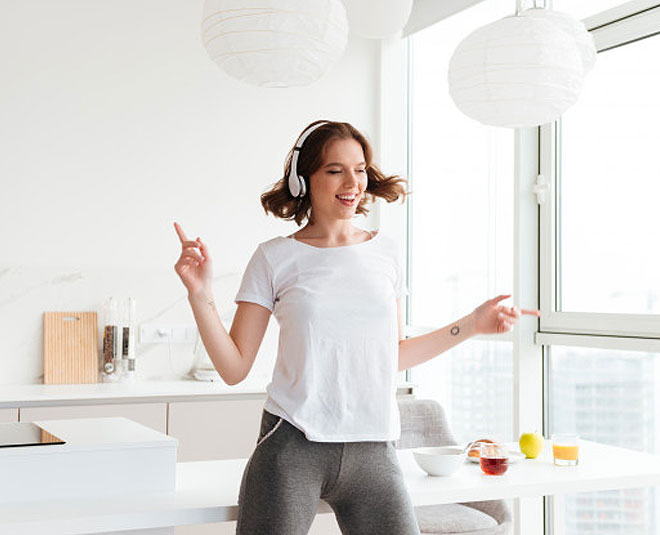 These can be separate movements or bundles that are not given in any way. Review the video and, if possible, objectively assess what is wrong: perhaps there are technical problems that are difficult to notice in the process. When you understand what's wrong, try to repeat the movement and record it on video again - and so on until you achieve a good result. nine0003
These can be separate movements or bundles that are not given in any way. Review the video and, if possible, objectively assess what is wrong: perhaps there are technical problems that are difficult to notice in the process. When you understand what's wrong, try to repeat the movement and record it on video again - and so on until you achieve a good result. nine0003
This approach will help you find errors and track progress. You can not even limit yourself to memorized ligaments, but improvise - then see how it looks from the outside.
7. Find like-minded people
Photo: Iakov Filimonov / ShutterstockIf you need an extra reason not to miss classes, then meeting new people can be a good motivation. It is easier here for those who train in a group. Often the dance school becomes the center of a close-knit community, where people come not only for the sake of classes, but also just to spend time together at dance parties. nine0003
Finally, the more partners around, the more experience.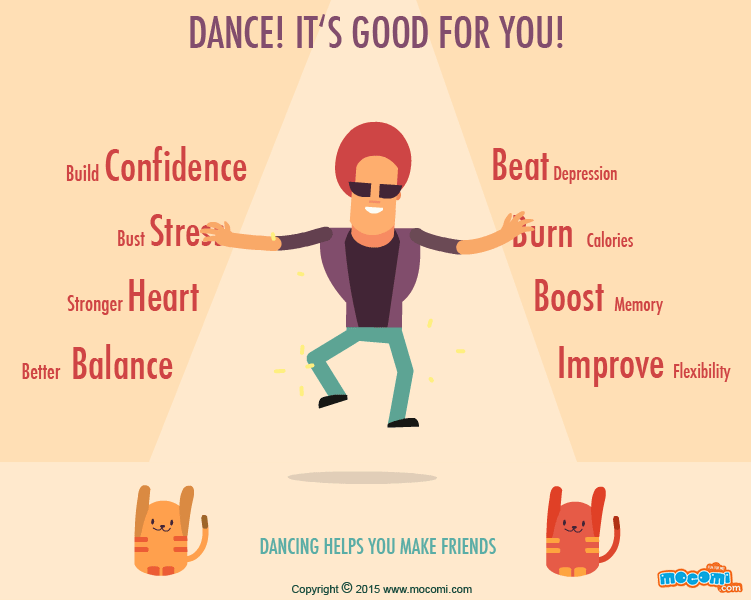 Do not limit yourself to dancers of your level of training and practice with those who are stronger or weaker than you. In the first case, you will be able to improve your skills, and in the second, you will try yourself as a coach - this, by the way, is a good way to learn to take more initiative and understand the very principle of movement in dance, and not just memorize the alternation of chords.
Do not limit yourself to dancers of your level of training and practice with those who are stronger or weaker than you. In the first case, you will be able to improve your skills, and in the second, you will try yourself as a coach - this, by the way, is a good way to learn to take more initiative and understand the very principle of movement in dance, and not just memorize the alternation of chords.
Stay fit and connected with the OPPO Watch. They have two powerful processors, a bright AMOLED display, 1 GB of RAM and 8 GB of internal memory, Bluetooth, Wi-Fi and NFC modules. And more than 90 training modes, including those designed specifically for ORRO. Work out cooler with music, you can listen to it in streaming services or download tracks to the memory of your watch.
If you want to enjoy clear sound, the OPPO ENCO W31 Wireless Headphones are for you. Two-level noise reduction system, easy operation and stable connection will make listening to music and talking on the phone as comfortable as possible.
